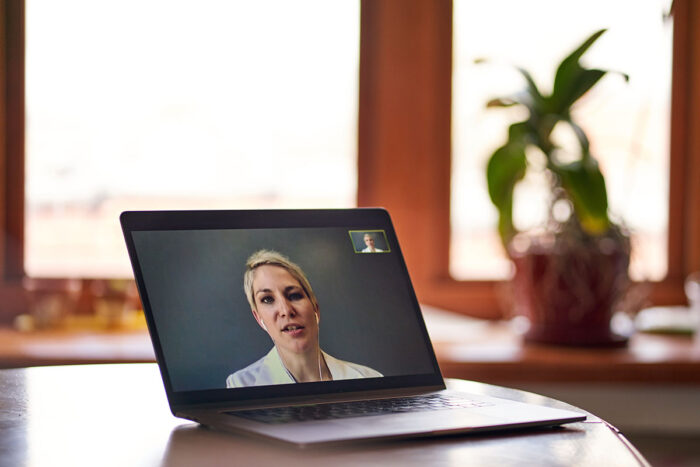Medical clinic shifts approach to patient care to defend against COVID-19
FEMA disaster management strategy guides rapid turnaround
 Matt Miller
Matt MillerJennifer Schmidt, MD, an assistant professor of medicine at Washington University School of Medicine in St. Louis, rapidly converted her adult primary care clinic to telemedicine in response to COVID-19, using guidance from the Federal Emergency Management Agency.
Just six weeks into her job as medical director of the Washington University Complete Care Clinic, Jennifer Schmidt, MD, had to completely redesign how the clinic operates to account for COVID-19.
The viral infection had been in the news before she started her job Feb. 1, but like most Americans, Schmidt hadn’t felt the need to change how she lived and worked. A newly named assistant professor of medicine at Washington University School of Medicine in St. Louis, Schmidt spent the month of February getting to know new colleagues, revising patient forms, planning outreach to underserved communities, and brainstorming ways to run the clinic more efficiently and effectively.
But in mid-March, Maureen Lyons, MD, an assistant professor of medicine, called to say that lung specialists including her husband, Patrick Lyons, MD, an instructor in pulmonology and critical care medicine, were getting increasingly worried about an impending surge of COVID-19 cases in the St. Louis area.
“There had been chatter about COVID-19 for a while, and I’ll admit I was guilty of thinking it was not much worse than the flu,” Schmidt said. “But the pulmonologists were one step ahead of the rest of us. Maureen called on a Friday and said, ‘We have to do something.’ By Saturday, I knew she was right. And by Monday, we had a COVID-19 plan and had begun implementing it.”
The complete care clinic serves adults with any medical need except pregnancy. Most patient visits are for regular checkups, or to manage chronic conditions such as diabetes or heart disease. Schmidt set to work with one goal in mind: continuing to provide care while protecting medical providers, staff and patients from exposure to COVID-19.
She found guidance, unexpectedly, in the Federal Emergency Management Agency’s incident command system. Originally designed to manage wildfires, the incident command system emphasizes setting objectives and then identifying strategies and tactics to achieve the objectives. Using the framework, Schmidt created a plan for triaging patient appointments and converting the clinic almost entirely to telemedicine, as well as a set of backup plans for unexpected problems. A summary of Schmidt’s plans and examples of telephone scripts and decision trees are available online in NEJM Catalyst, which published Schmidt’s paper describing the clinic’s coronavirus response strategy.
“I emailed my team on a recent Sunday evening with the new plans, and when I walked in on Monday morning a little after 8, the staff were already on the phone canceling and rescheduling appointments,” Schmidt said. “They were fully mobilized. They were so great. I cannot acknowledge how critical they were to our success.”
Three weeks in, there have been some hiccups. The electronic medical records system went down on day two. Schmidt has struggled to obtain enough headsets and other equipment for telehealth visits. But the clinic has succeeded in its main goal of continuing to provide care for every patient while minimizing the chance of exposing patients or staff to COVID-19.
“In my previous life, I was an engineer, and I think my engineering training kicked in here,” Schmidt said. “When you have a problem to solve, you start in one place and just start moving forward. I think that having a plan and having something for everyone to do is the reason why this has worked so well. I hope that publishing our experience in NEJM Catalyst will help other clinics prepare for COVID-19, too.”






